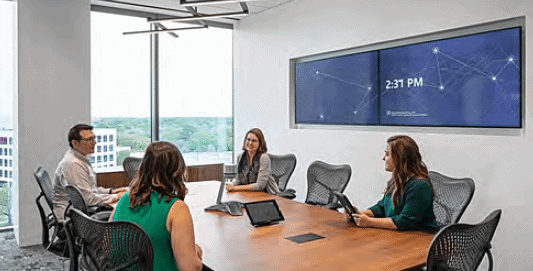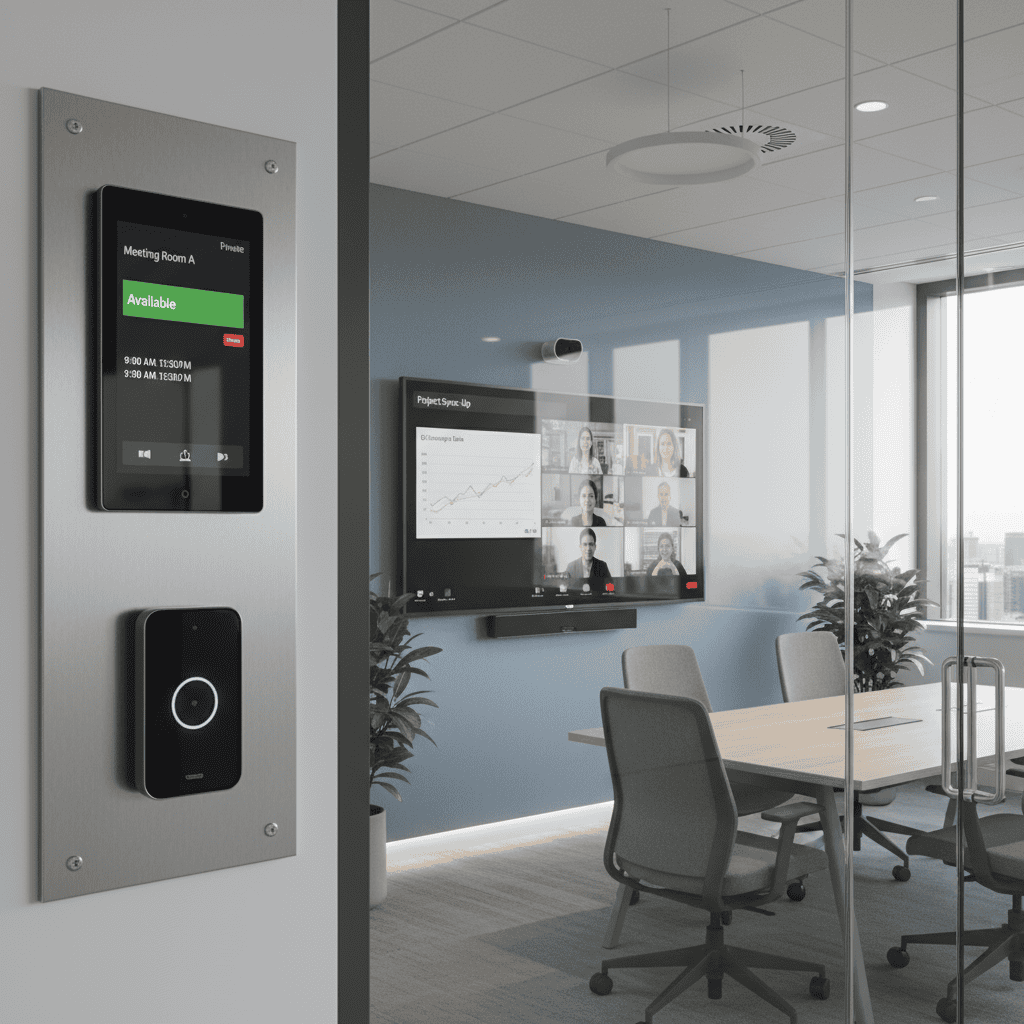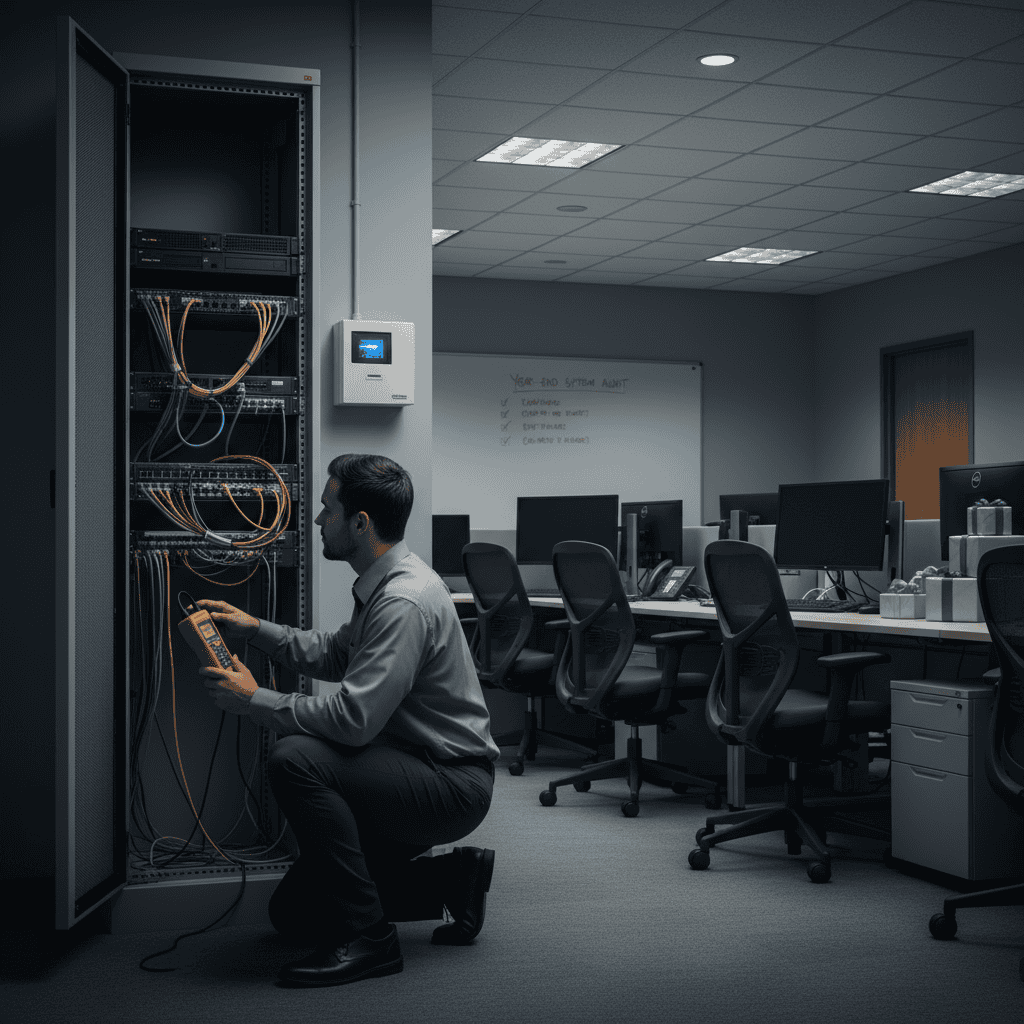Good Bye Projectors, Hello Conference Room Video Walls

Remember overhead transparency projectors? The large boxy machines with a light bed and focus arm? Every “slide” of your presentation was a piece of paper or a piece of clear plastic with information printed or drawn on it. The technology was remarkable for its time, but the advantages of modern video projectors connected to computers were undeniable.
A similar transition is happening now, with video projectors giving way to video walls. And while it’s unlikely that video walls will completely replace video projectors for all applications, they offer lots of benefits for the modern, hybrid office environment.
Video walls are becoming more common in meeting rooms and conference rooms as a tool for presentations, remote video conferences, and other uses.
Limitation Of Projectors
At the moment projectors are the dominant technology due to their popularity and lower costs. However, the limitations of video projectors are leading many businesses to invest in conference room video walls. Let’s explore the reasoning.
Resolution
While traditional film projectors have a higher resolution than digital video projectors, the advent of 4K resolution screens has cast many digital video projectors in a less favorable light.
You can purchase 4K video projectors, but as you’ll learn the reasons to go flat-screen keep building.
Maintenance
Digital video projectors can be maintenance intensive. They often require special warm-up and shut-down procedures in order to prolong the life of the bulb. And the bulbs will burn out no matter how diligent your team is at caring for the machine.
Connectivity
Video projectors also limit the number of people who can present at one time. And usually, that connection happens through a port adapter or “dongle.” For many people, the word “dongle” is enough to trigger flashbacks to bungled presentations and desperate searches for the right connector.
Variability Of Quality For Participants
The best experience for an audience in a room with a projector is for everyone to sit facing the projection wall head-on and for the room to be as dark as possible. That type of environment works for a movie theater, not so much for a corporate conference room.
Benefits Of A Conference Room Video Wall
While the rarity of conference room video walls may cause people to see them as a novelty for early adopters, the reality is that video walls offer a lot of useful features.
Higher Resolution
Thanks to the latest advances in resolution and screen technology, it’s possible to install a multi-panel video wall that offers incredibly high definition picture, high contrast, and wide viewing angles (careful, some cheap LCD screens are designed for wide viewing angles).
The screens with the best picture will feature LED backlighting and slim bezels — allowing for a near-seamless viewing experience from every angle.
A quick note on LED vs LCD: LED refers to the type of backlighting while LCD refers to the technology in the screen that enables color and contrast. Even if you’re looking at two monitors and one says LED and the other says LCD, they’re both technically LCD displays. Most likely, the one that says LCD uses a fluorescent backlighting system that is inferior to the LED backlighting system.
Flexible Use – Dividing Different Screens For Different Functions
Because video walls combine multiple display panels into a continuous surface you use the wall as a single display, or use individual screens to show a different video feed. This can be useful for video conferencing, but it can also be used to present multiple diagnostic readouts at the same time.
This level of flexibility is extremely hard to achieve with digital video projectors.
No Noisy Fan = Better Audio
Digital video projectors require a powerful (if small) fan to dissipate the heat from the projector bulb. You may not hear it at first, but the low rumble of a projector fan adds unnecessary noise to a room where clear audio is a must.
While flat-screen video walls do generate heat, the cooling systems may be passive (no moving parts) and are installed behind the screens so any sound is muffled instead of blowing directly into the room.
Interactivity With Touch Screen Technology
The other advantage of modern LED flat screens is that they can include touchscreen capability. Some touchscreen video walls can handle up to 32 points of input, meaning that multiple people in the room can interact with the video wall at once.
Should You Upgrade?
For most businesses, replacing every digital video projector with a video wall is not a smart investment. Especially if your team is comfortable with your existing projector technology, you should consider strategic placement instead of a universal upgrade.
Here’s what you should take into account when evaluating the need for an upgrade.
Room Function – Best For Frequent Use Rooms
Conference room video walls are a great solution for high traffic rooms where the frequent on/off cycle would strain a digital video projector. Video walls are quick to power up and down. Plus they make it much easier for everyone in the room to see and interact.
Room Design – Great For Rooms With Natural Light
Video walls perform really well in rooms with lots of natural light (something that detracts from the performance of a video projector). Day or night your LED video wall will be easily visible without drawing the black-out shades or dimming the lights.
About i.e.Smart Systems
i.e.Smart Systems is a Houston, TX based technology integration partner that specializes in design and installation of audio/visual technology and structured cabling. For more than three decades, our team of in-house experts has partnered with business owners, architectural firms, general contractors, construction managers, real estate developers, and designers in the Houston market, to deliver reliable, scalable solutions that align with their unique goals.




